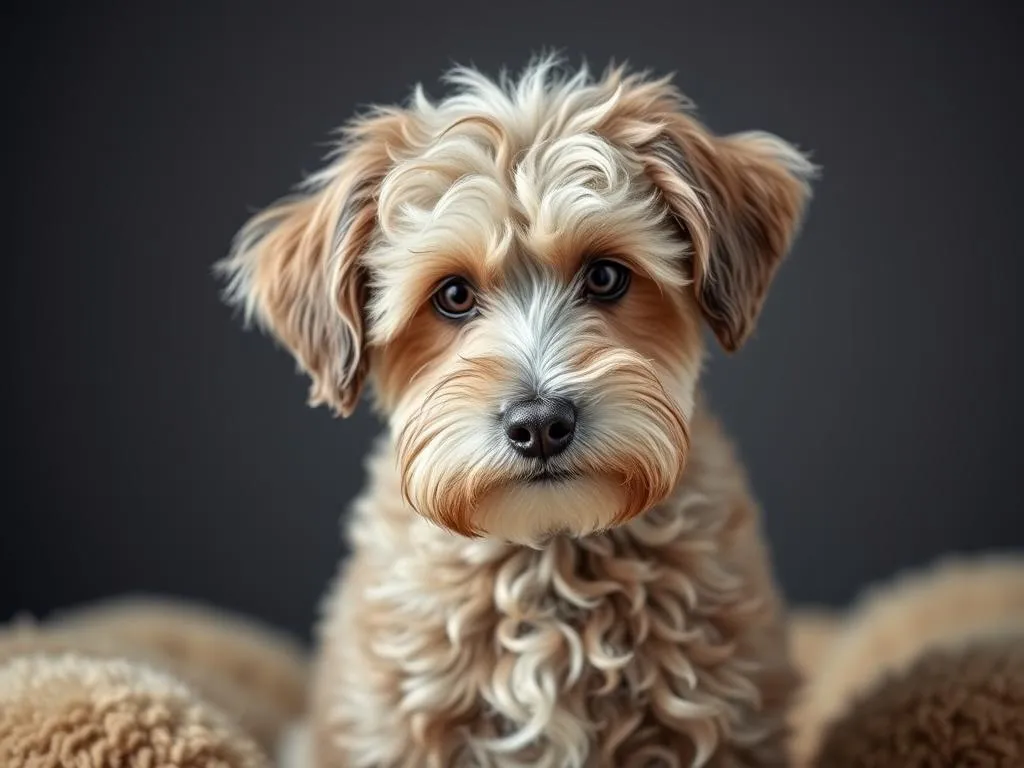
Choosing the right dog breed is one of the most critical decisions potential dog owners can make. Each breed comes with its unique characteristics, temperament, and care requirements. Among the popular hybrid breeds today is the Schnoodle, a delightful cross between a Schnauzer and a Poodle. As Schnoodles gain popularity, understanding their cost is essential for anyone considering adding one to their family.
Understanding Schnoodles
What is a Schnoodle?
A Schnoodle is a hybrid breed that combines the Schnauzer and Poodle, resulting in a dog that is charming and affectionate. Schnoodles come in various sizes, depending on whether they inherit the Miniature, Standard, or Toy Poodle genes. They typically exhibit a curly or wavy coat that can vary in color, including black, white, apricot, and more.
Popularity and Traits
Schnoodles have surged in popularity due to their friendly nature and intelligence. They are known for being highly trainable, making them a suitable choice for families, singles, and seniors alike. Common traits include:
- Size: Depending on the size of the Poodle parent, Schnoodles can range from small (around 10-15 pounds) to medium-sized (20-50 pounds).
- Temperament: Generally, they are friendly, playful, and protective, making them excellent companions.
- Coat Types: Their coat requires regular grooming to prevent matting, and many owners appreciate the hypoallergenic qualities of a Schnoodle’s fur.
Factors Affecting the Cost of a Schnoodle
Initial Purchase Price
When considering how much does a Schnoodle cost, the initial purchase price plays a significant role. On average, the cost of purchasing a Schnoodle can range from $1,000 to $3,000. This price can vary based on several factors, including breeder practices and geographic location.
Breeder Reputation
Choosing a reputable breeder is crucial. Responsible breeders invest in their dogs’ health and wellbeing, often conducting health screenings and genetic testing. As a result, a well-bred Schnoodle may be on the higher end of the price spectrum. In contrast, purchasing from less reputable sources may yield lower prices but risks health issues.
Geographic Location
The geographic location of the breeder can significantly impact the price of a Schnoodle. In urban areas, where demand is high, prices may soar compared to rural regions. Additionally, local economic conditions can affect the overall market for Schnoodles, leading to variations in pricing.
Supply and Demand
Schnoodles are currently in high demand, and as with any popular breed, this demand influences their price. Seasonal trends also play a role; for instance, puppies born in the spring may be more readily available in the summer, potentially lowering prices during peak availability.
Ongoing Costs of Owning a Schnoodle
Food and Nutrition
Once you’ve brought your Schnoodle home, ongoing costs can add up quickly. Monthly food costs can average $40 to $70, depending on the quality of food chosen. It’s essential to provide a balanced diet, including high-quality kibble, fresh vegetables, and occasional treats specifically suited for small to medium breeds.
Grooming Expenses
Regular grooming is vital for Schnoodles to maintain their coat and prevent matting. While some owners choose to groom their dogs at home, professional grooming services can range from $50 to $100 per session, depending on the groomer’s expertise and location. Regular grooming every 6-8 weeks is usually recommended.
Veterinary Care
Routine veterinary care is essential for your Schnoodle’s long-term health. Annual check-ups, vaccinations, and preventive medications can cost between $200 to $500 a year. Additionally, Schnoodles can be prone to specific health issues such as hip dysplasia and skin conditions, which may require further veterinary attention and additional costs.
Training and Socialization
Investing in training and socialization is crucial for a well-behaved Schnoodle. Puppy training classes typically cost between $100 to $300, while private training sessions may range from $50 to $100 per hour. Investing in good training can prevent behavioral issues down the line, making this expense worthwhile.
Additional Expenses to Consider
Supplies and Equipment
Bringing a Schnoodle home involves several one-time and recurring expenses. Initial supplies may include:
- Collar and leash: $20 – $50
- Dog bed: $30 – $150
- Food and water bowls: $10 – $50
- Toys: $10 – $100
These costs add up, so budgeting for these items is essential.
Pet Insurance
Pet insurance can be a valuable investment for Schnoodle owners. It helps cover unexpected veterinary costs, which can be significant. On average, pet insurance premiums range from $30 to $70 per month, depending on the coverage plan. Having insurance can provide peace of mind, especially if your Schnoodle requires expensive medical treatment.
Miscellaneous Costs
Other miscellaneous costs associated with dog ownership include:
- Boarding: $25 – $75 per night
- Doggy daycare: $15 – $50 per day
- Grooming: Additional costs beyond regular grooming sessions for special occasions
Understanding these costs will help you prepare for the financial commitment of owning a Schnoodle.
Cost Comparison: Schnoodles vs. Other Breeds
Comparison with Other Designer Breeds
When considering how much does a Schnoodle cost, it’s helpful to compare them with other popular designer breeds like Goldendoodles and Labradoodles. Goldendoodles can range from $1,500 to $3,000, while Labradoodles typically fall between $1,200 and $2,500. Schnoodles are reasonably priced in comparison, making them an attractive option for potential owners.
Traditional Breeds vs. Schnoodles
Comparing Schnoodles to traditional breeds, such as Labrador Retrievers or Beagles, can also shed light on their cost-effectiveness. Labrador Retrievers typically cost between $800 and $2,000, while Beagles usually range from $400 to $1,200. Schnoodles may come with a higher initial cost, but their unique traits and lower shedding may be worth the investment for many families.
Tips for Budgeting for a Schnoodle
Creating a Cost Plan
To manage the financial commitment of owning a Schnoodle, creating a comprehensive cost plan is essential. Begin by estimating both initial and ongoing expenses, including food, grooming, and veterinary care. This plan will help you stay within your budget and avoid surprises.
Saving Strategies
Finding ways to reduce costs can make owning a Schnoodle more feasible. Consider DIY grooming to save on professional grooming expenses, and explore home-cooked meal options that meet your dog’s dietary needs. Additionally, purchasing supplies in bulk can lead to significant savings.
Financial Preparedness
Being financially prepared for unexpected costs is crucial. Setting aside an emergency fund for veterinary expenses or unexpected needs can prevent stress and allow you to focus on enjoying your time with your Schnoodle.
Conclusion
In summary, owning a Schnoodle involves both initial costs and ongoing expenses that can add up over time. Understanding how much does a Schnoodle cost is essential for anyone considering this affectionate hybrid breed. From initial purchase prices to ongoing care, budgeting wisely will ensure a happy and healthy life for your furry friend.
Thorough research and financial planning are key to enjoying the joys of dog ownership. Schnoodles bring love and companionship, and with the right preparation, you can ensure a fulfilling experience for both you and your new best friend.









